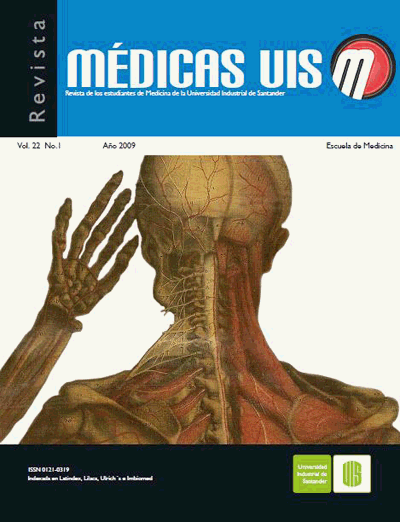Abstract
OBJECTIVE: evaluate the quality from the prescription of medications to the population, in the Units of Primary Attention to the Health of the State of Tabasco, Mexico, in the year 2005.
MATERIAL AND METHODS: study of Use of Medications. Period January-December of 2005.
SAMPLING DESIGN POLIETHAPYC: 160 units of Primary Attention to the Health and 245 granted consultations, elects in a simple randomized way. Sociodhemographycs variables, diagnosis and therapeutic scheme. Evaluation of the quality of the prescription with base in the clinical guidelines contained in the Mexican Offcial Norms (MON) for the diagnosed illnesses. Classifcation of the prescriptions in appropriate, not appropriate and non evaluable. Prosecution and analysis of data with the software SPSS 11.0. They were considered descriptive statisticals.
RESULTS: 414 medications prescribed 245 patients. More frequent diagnoses: infections breathing sharp 16.3%, diabetes mellitus not insulinodependienth 15%, hypertension essential 12%, gasthroenteritys 9%. Medications average prescribed for patient 2. More frequent pharmacological groups: complements and supplements nutritious 20%, antibiotics 19%, analgesic 17%. Quality of the prescription: 63% inadequate and 37% appropriate.
CONCLUSIONS: the quality of the medical prescription is inadequate in major proportion, that refects qualifcation/supervision lack. Contrary to the references, the pharmacological group of more prescription was the complements and nutritious supplements.
Key words: Use rational of medications. Prescription of medications. Quality of prescription.
References
2.Villanueva LA, Martínez H, García-Lara E. Consumo de fármacos en el embarazo. Ginecol Obstet Mex 1998;66(23):4.
3.Hemminki E, Karttunen T, Hovi S-L, Karro K. The drug industry and medical practice – the case of menopausal hormona therapy in Estonia. Soc Sci Med 2004;58(1):89-97.
4.Do Carmo TA, Nitrini SMOO. Prescições de medicamentos para gestantes: um estudo farmacoepidemiológico. Cad Saude Publica 2004;20(4):1004-13.
5.Pérez R. Farmacoepidemiología. [serie en Internet]. [citada 2007 Ene 27]. Disponible en: www.monografias.com/trabajos12/farmacoe/farmacoe.shtml
6.Cires M. Capítulo 5. Estudios de utilización de medicamentos. [serie en Internet]. [citada 2007 Ene 27]. Disponible en: www.cdf.sld.cu/Capítulo-5.htm-39k.
7.Barnett A, Creese AL. Ayivor ECK. The economics of pharmaceutical policies in Gahana. Int J Healt Serv 1980;10:479-99.
8.Victora CG, Facchini LA, Grassi Filho M. Drug usage in Southern Brasilian hospitals. Trop Doctor 1982;12(4pt2):231-5.
9.Hogerzeil HV. The use of essential drugs in rural Gahana. Int J Health Serv 1986;16:425-39.
10. Isenalumhe AE, Oviawe O. Polypharmacy: its cost burden and barrier to medical care in a drug-oriented health care system. Int J Health Serv 1988;18:335-42.
11.Angunawela II, Thomson GB. Drug prescribing patterns: a study offour institutions in Sri Lanka. Int J Clin Pharmac. Ther Tox. 1998;26(2):69-74.
12.Goodburn E, Mattosinho S, Monge P, Waterson T. Cost-benefit of self prescribinf. Lancer 1989;II:281.
13.Weedle PB, Poston JW, Parish PA. Drug prescribing in residential hornes for elderly people in the United Kingdom, DICP Ann Pharmacother 1990;24:533-6
